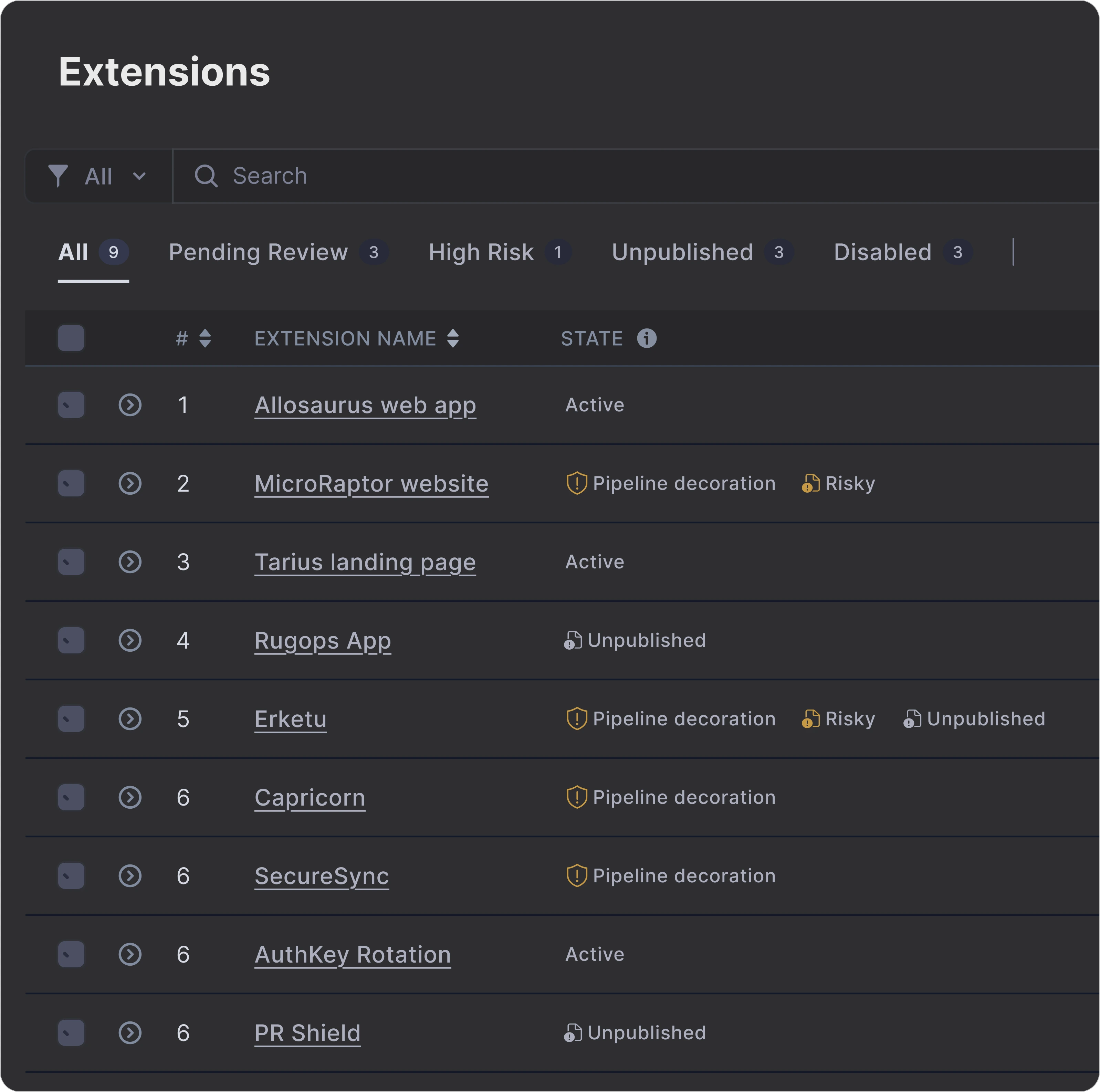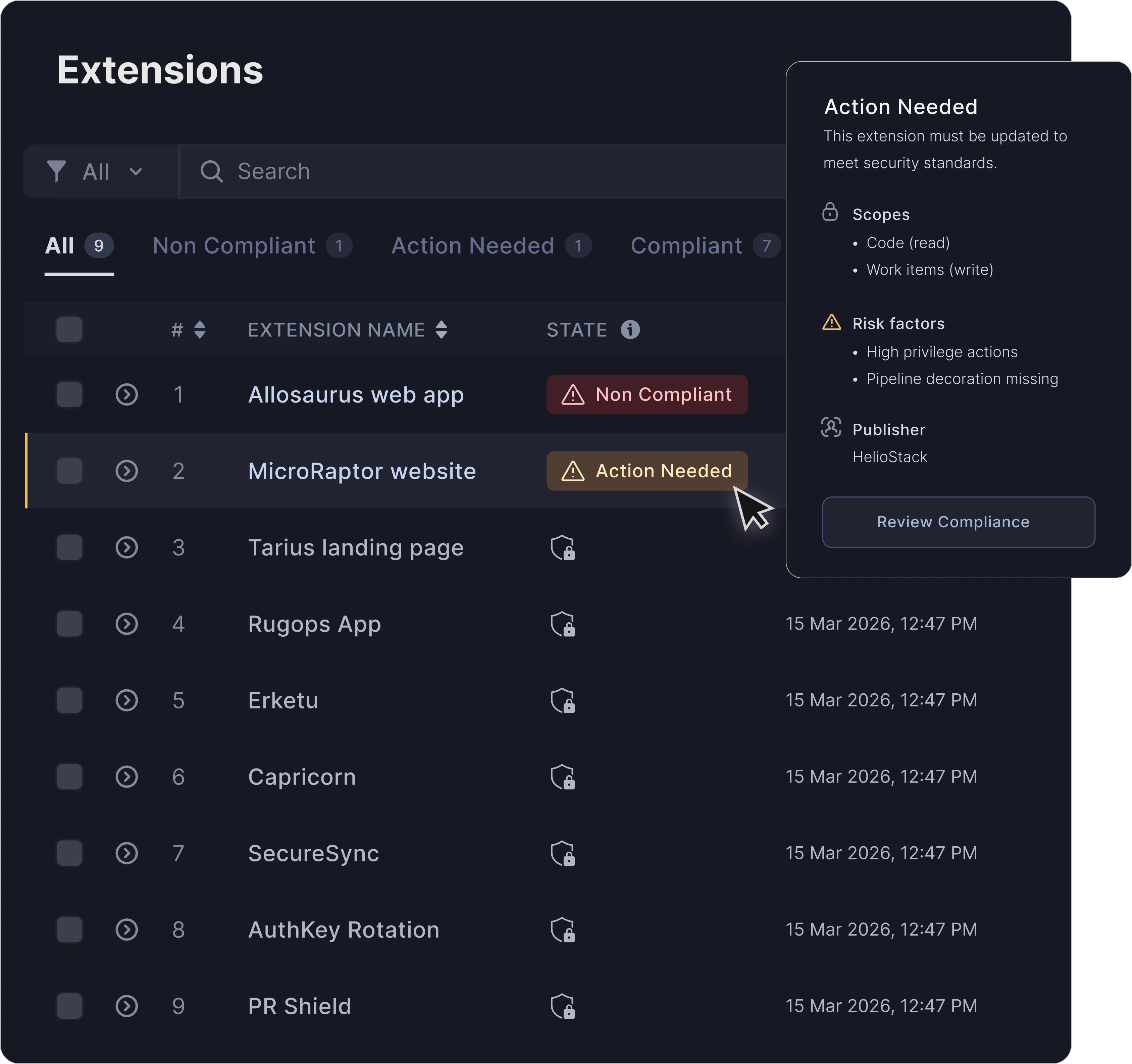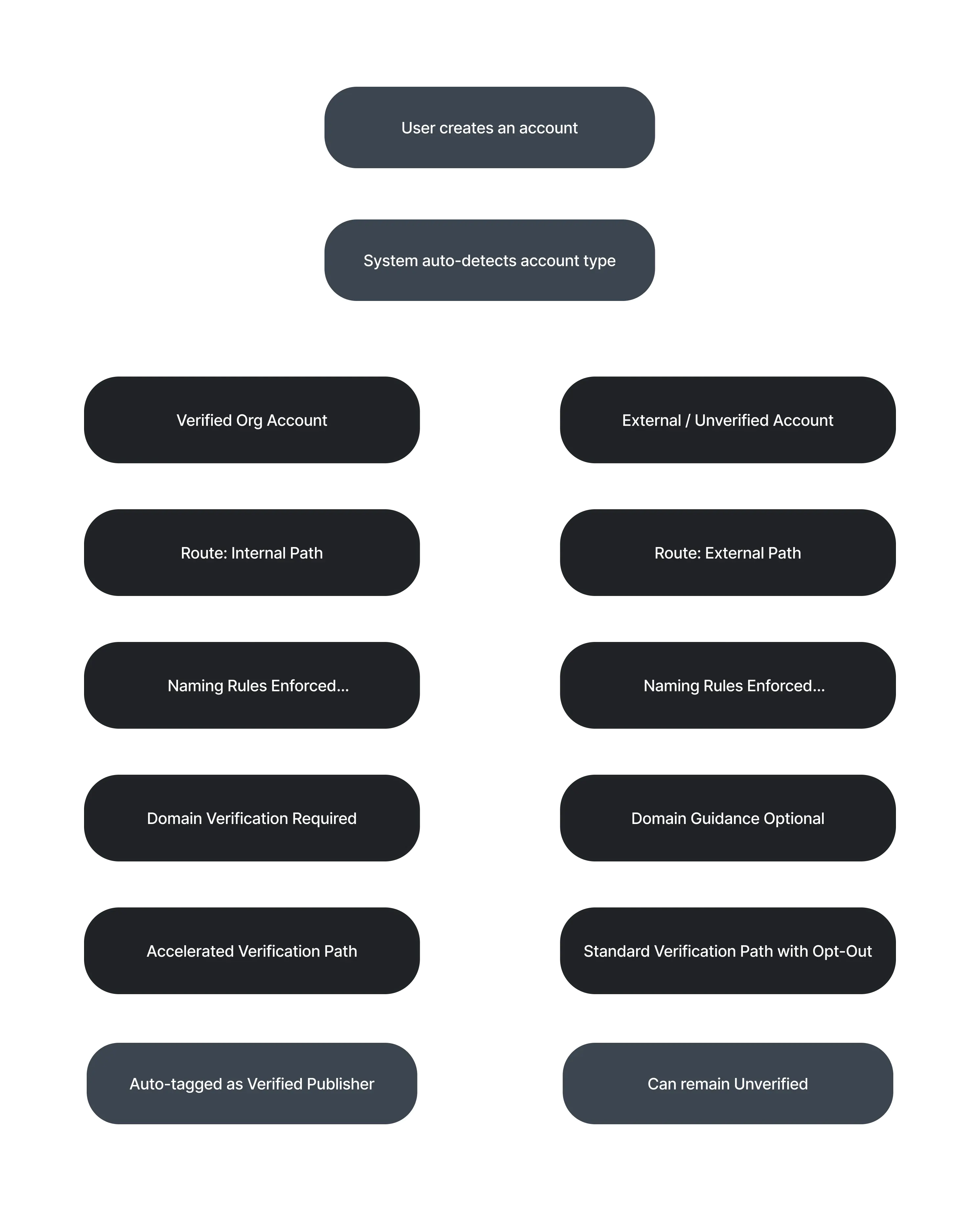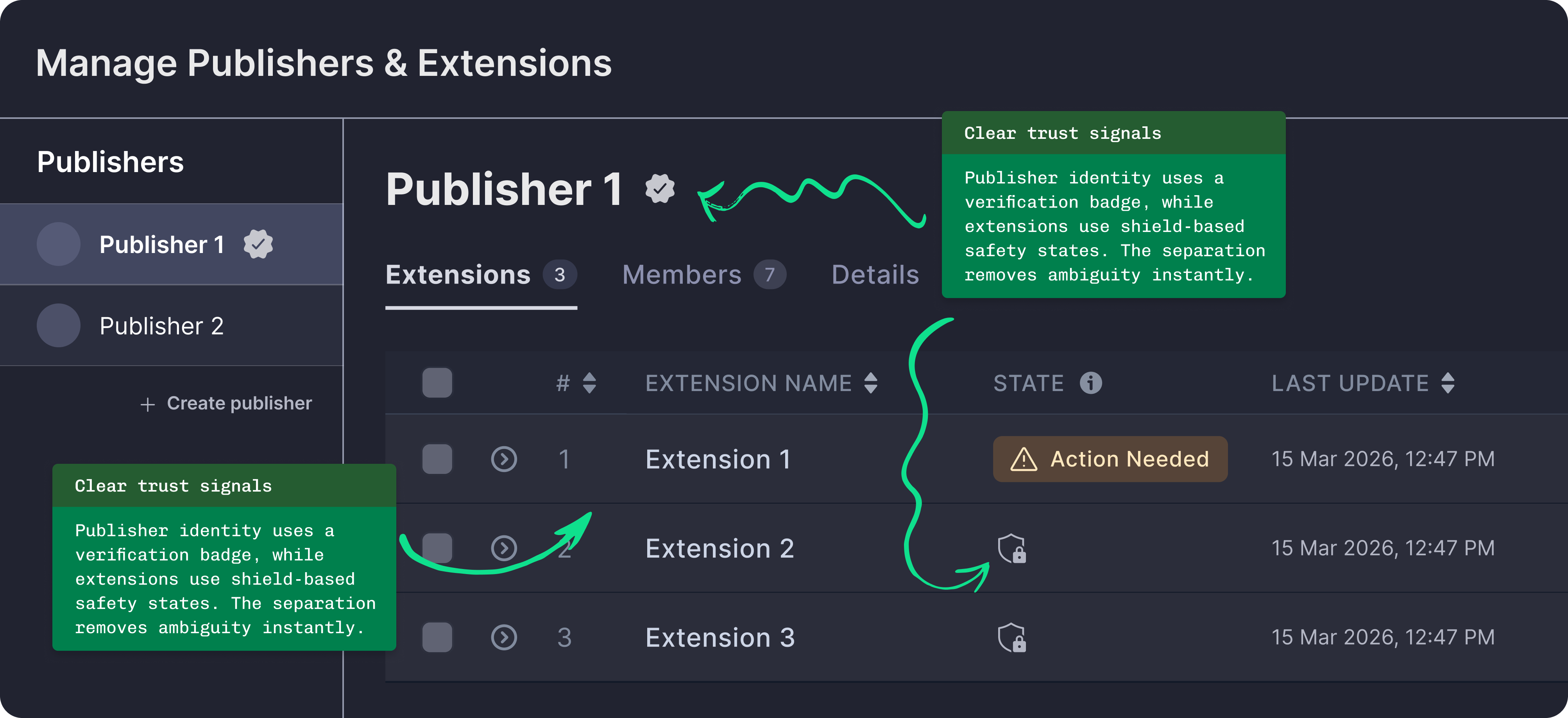Flow 1: Initial Setup
Creating a publisher → uploading an extension → assigning roles.

I designed a mission-critical compliance system relied on by more than 10,000 organizations. The new experience boosted certification by 70% in three months, reduced triage effort by nearly 50%, and introduced a unified trust language that now guides decision-making across the platform.
Marketplace compliance had become unpredictable. Signals contradicted each other, rules lived in disconnected tools, and certification existed only at the publisher level. This left blind spots at the extension level, the surface developers rely on.
I rebuilt the compliance ecosystem end-to-end: state modeling, trust indicators, verification logic, routing, prioritization, UX writing, accessibility, and onboarding patterns.
Compliance had grown brittle and inconsistent, creating systemic failures across the workflow.
“With hundreds of extensions, everything looks risky. I can’t tell what to fix first.”
I partnered across PM, engineering, accessibility, legal, and compliance to ship a scalable, standards-aligned system.
I interviewed Marketplace Admins, Engineers, PMs, and Compliance Reviewers to identify why decisions felt inconsistent and difficult to trust. Four systemic insights shaped the redesign.

Flat, dense list: every extension looked equally risky.

Prioritized, trust-first design: high-risk items rise to the top.
We replaced legacy terms with plain, cognitive-friendly language. The model is simple, predictable, and fast to recognize.
Meets all requirements.
Next steps are shown inline.
High risk. May be disabled until resolved.
Temporarily turned off as a safety fallback.
We designed a layered trust language that separates publisher identity from extension safety, while still reading as one cohesive system across the Marketplace.
Indicates whether a publisher meets verified identity and domain requirements.
Publisher identity uses a verification badge (✔︎), while extension trust uses shield-based compliance states.
These signals work together but represent different layers of trust.
Shows whether an extension has passed signing, permission, and update-safety checks.

Key decisions
“The shield makes it obvious. I know exactly what is safe.” Admin Tester
High-risk items rise to the top using a simple temperature range: Compliant (grey), Disabled (grey), Action Required (gold), and Non Compliant (red).
Compliant
Disabled
Action Required
Non Compliant
The system identifies publisher type automatically and routes users into the correct path. This ensures consistent naming, accurate domain verification, and predictable outcomes. Publisher identity is surfaced via a verification badge (✔︎), while extension safety is communicated through shield-based compliance states.

Compliance checks used to fire late in the publishing flow, creating rework and slow approvals. The new system shifts checks earlier in the lifecycle, catching issues during authoring and pre-submission, so uploads are predictable and faster to approve.
Shifting checks left cut late-stage rework, reduced back-and-forth, and made approvals more predictable for both publishers and reviewers.
Two targeted flows simulated high-friction compliance moments and measured comprehension, confidence, and decision-making at critical points. Sessions used scenario tasks, live observation, think-aloud, and post-task reflection to expose friction and mental-model gaps.
Creating a publisher → uploading an extension → assigning roles.
Resolving issues or opting out of certification, with downstream impact checks.
Publisher vs extension certification blurred.
Copy separates publisher vs extension certification.
“Action Required” and “Non-Compliant” lacked clear outcomes.
States now show consequences and next steps.
Shield meaning unclear without labels.
Shield is paired with evergreen labels and helper text.
1P vs 3P paths felt unexpected.
Inline explanations for 1P and 3P paths.
100+ flagged extensions with no prioritization.
Temperature-based ordering surfaces high-risk first.
Sharper language, clearer outcomes, visible routing, and risk-first ordering reduced cognitive load and improved accuracy.
Early versions used the same shield language for both publishers and extensions, blurring the distinction between certified publishers and certified extensions. High-urgency extensions were also getting lost inside publishers with hundreds of listings. Through multiple rounds of testing, we separated the signal types and restructured the UI so triage aligns with how admins actually scan for risk.


“I can finally tell what needs action. It used to take 20+ minutes just to scan.”
“Separating publisher badges from extension shields made the model click instantly and cut our documentation overhead.”
Clarity beats control.
Fewer states → faster cognition → fewer errors.
Consistency in words drives consistency in action.
Embedding with engineering ensured scalability, not just polish.
Evergreen icons outperformed color-only cues for every user.
This project changed the way I approach complex systems. I realized that clarity, not control, is what allows trust to grow. By crafting a shared mental model instead of another interface, we helped thousands of organizations regain confidence and create a durable foundation for governance.